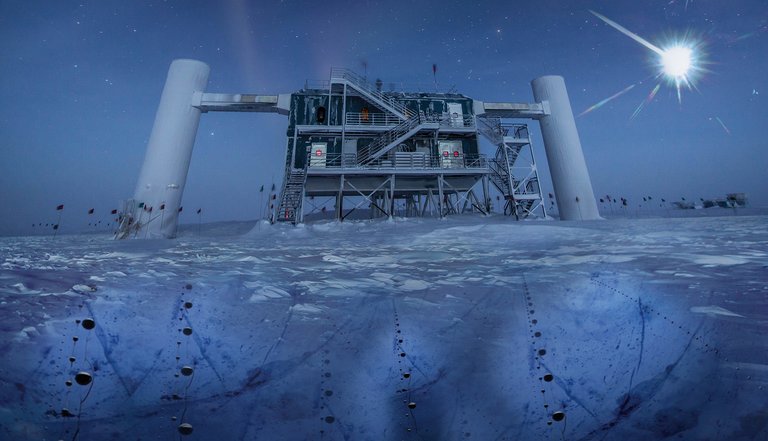First source of high-energy neutrinos discovered: a blazar

They discover a source of high-energy neutrinos in a galaxy at 3.7 billion light-years. And it can also be a source of cosmic rays. In fact, although cosmic rays were found a hundred years ago, their origin is unknown, but it is believed that high-energy neutrinos can originate in the same processes that are generated.
On 22 September 2017, a high-energy neutrino was detected at the IceCube observatory in the South Pole and it was verified that it could come from a known blazar. Several telescopes from around the world were immediately noticed, and the radiation from that blaze (gamma rays, radio waves) was also recorded in electromagnetic waves of different lengths. All data suggest that the source of these neutrinos was the coat of arms TXS 0506+056.
_display_home.jpg)
A quasar is called blasting when the jet of energy is directed toward Earth. That is, it is a nucleus of galaxies of very high energy, in which when the material falls to the central supermassive black hole a jet of energy comes out directly directed towards the Earth. Neutrinos have been detected in IceCube. In addition, once this is seen, the neutrinos detected in the IceCube are reviewed in recent years and realize that in 2014 and 2015 a dozen neutrinos came from the same source. Published in the journal Discovery Science in two articles (1,2).
And indirectly, the first source of cosmic rays may be discovered. In fact, in the processes in which high energy neutrinos are theoretically generated, cosmic rays are also produced. However, the problem of cosmic rays is that they are charged particles, so the magnetic fields of the universe are diverted. Therefore, it is impossible to know where the cosmic rays come from. With neutrinos the opposite happens, they have no load and hardly interact with the rest of the matter. By crossing almost all matter (billions every second cross us), and being unaffected by magnetic fields, they can travel directly for millions of light years. The problem of neutrinos is that, having so little interaction with matter, they are very difficult to detect.
IceCube is a network of one square kilometer of 5,000 light sensors immersed in the ice, able to detect the light emitted when colliding a neutrino with an ice atom. Very few are detected and most are low energy, such as those produced by the atmospheric impact of cosmic rays. On September 22, millions of high-energy neutrinos from a blaze would cross the IceCube, detecting one. It is not little.
Buletina
Bidali zure helbide elektronikoa eta jaso asteroko buletina zure sarrera-ontzian











